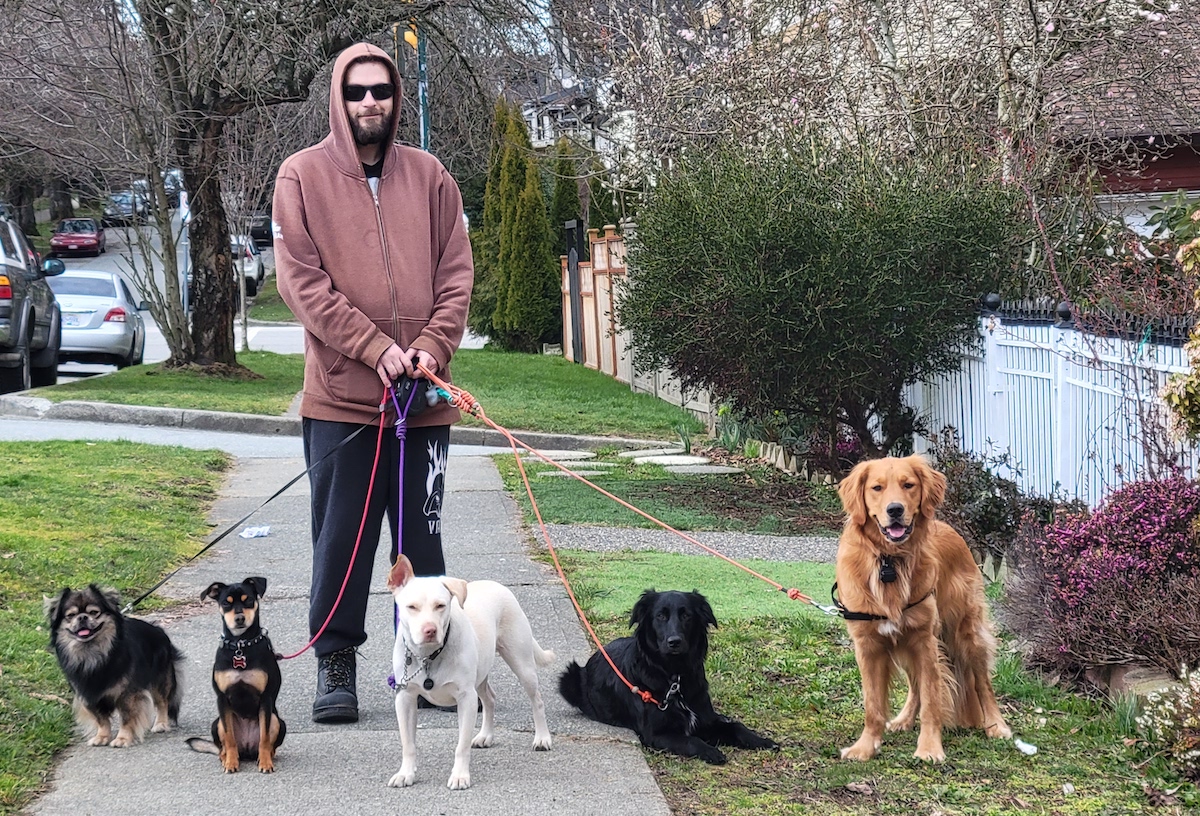Every owner wants their dog to feel secure and confident in their daily lives. In a city-scape, that means sharing narrow sidewalks, passing construction sites, and crossing busy streets, even when there are other dogs around. (!!)
Here’s the thing:
Calm, courteous dogs count on their humans’ good leadership to navigate this complicated environment.
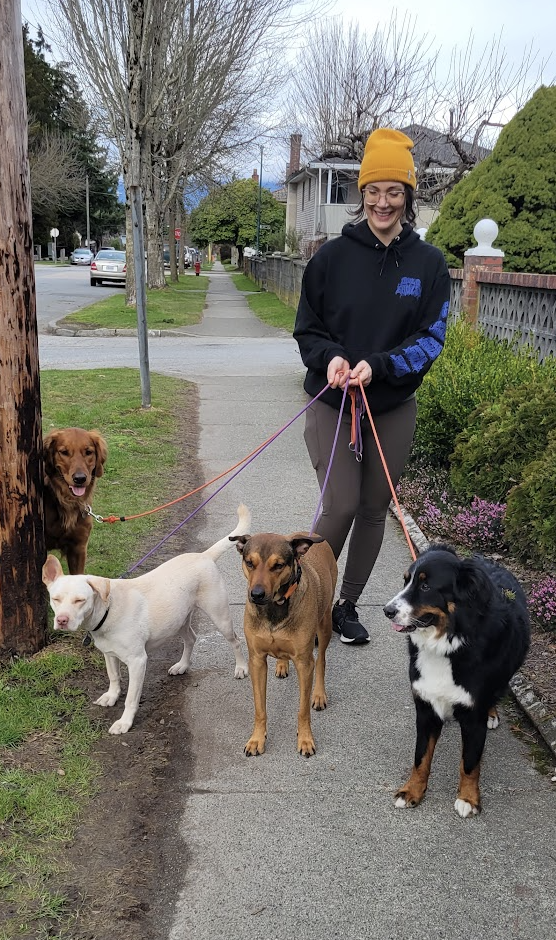
When YOU set the pace and direction, they can relax.
Here’s how:
Step 1: Expect Polite Behaviour… consistently
Dogs need to understand the expectations of the pack, even if that’s just the two of you.
In our pack at Scamps, I expect the dogs to work together, so we can all have a nice walk. We all stop when someone wants to sniff, and we wait while each one pees. No one should be pulling the rest of us along, plowing through, or hurting each other. It’s unsafe, and rude, but it’s my job to correct it, not theirs.
Stopping the walk – not pulling back – is punishment for a dog that wants to go. Moving forward is the reward for walking nicely.
Watch the signs
All 3 of these guys could use a reset –>
Taut leashes, ears pinned back, heads low for extra thrust… yikes!
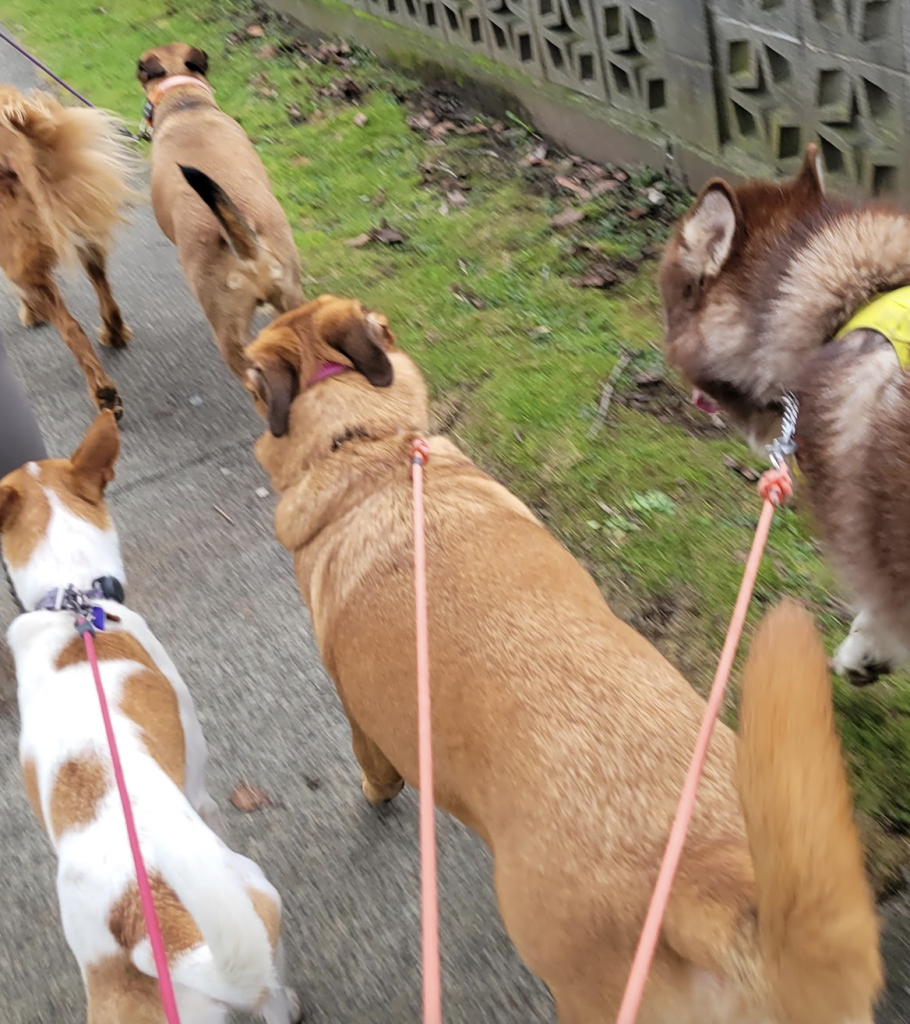
Time to take a break!
If we can only take one step at a time, we stop after every step. If it takes 10 minutes to walk 10 meters, I stick to it. I remind them verbally to “walk, not pull.” I jingle the leash when it starts going taut, and help them as much as I can, but I will not walk if they’re pulling. Once they understand the connection (pulling = stop, slack leash = go), the walk continues much more smoothly. And the behaviour becomes the rule.
Step 2: Use the right tools
The more immediately correction occurs after the behaviour, the quicker the dog can understand the problem.
A Martingale, or limited slip, collar hangs loose and comfy when dogs are walking nicely and they can also immediately deliver 3 physical cues to tell dogs when they need to relax:
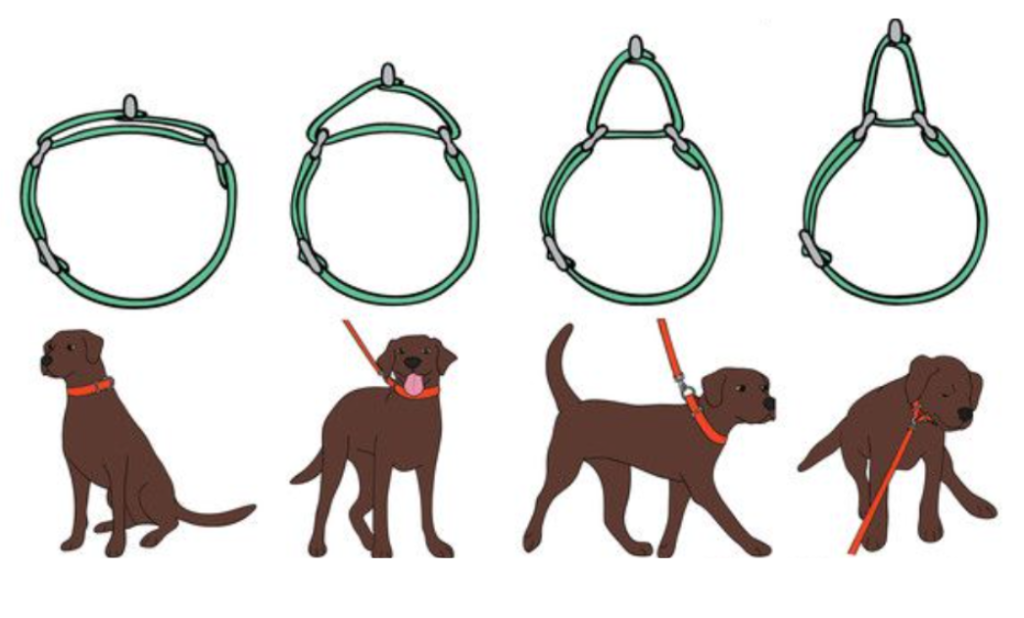
When you choose a chain link Martingale, the loose part of the collar tightens around the whole neck when they’re pulling – instead of creating pressure on the throat, airways, and esophagus.
The chain links clink audibly as they slide through the rings, so you and the dog can hear that they’re getting tighter… and they clink as they slide back, when the pressure is off.
Here’s what we want to see! –>
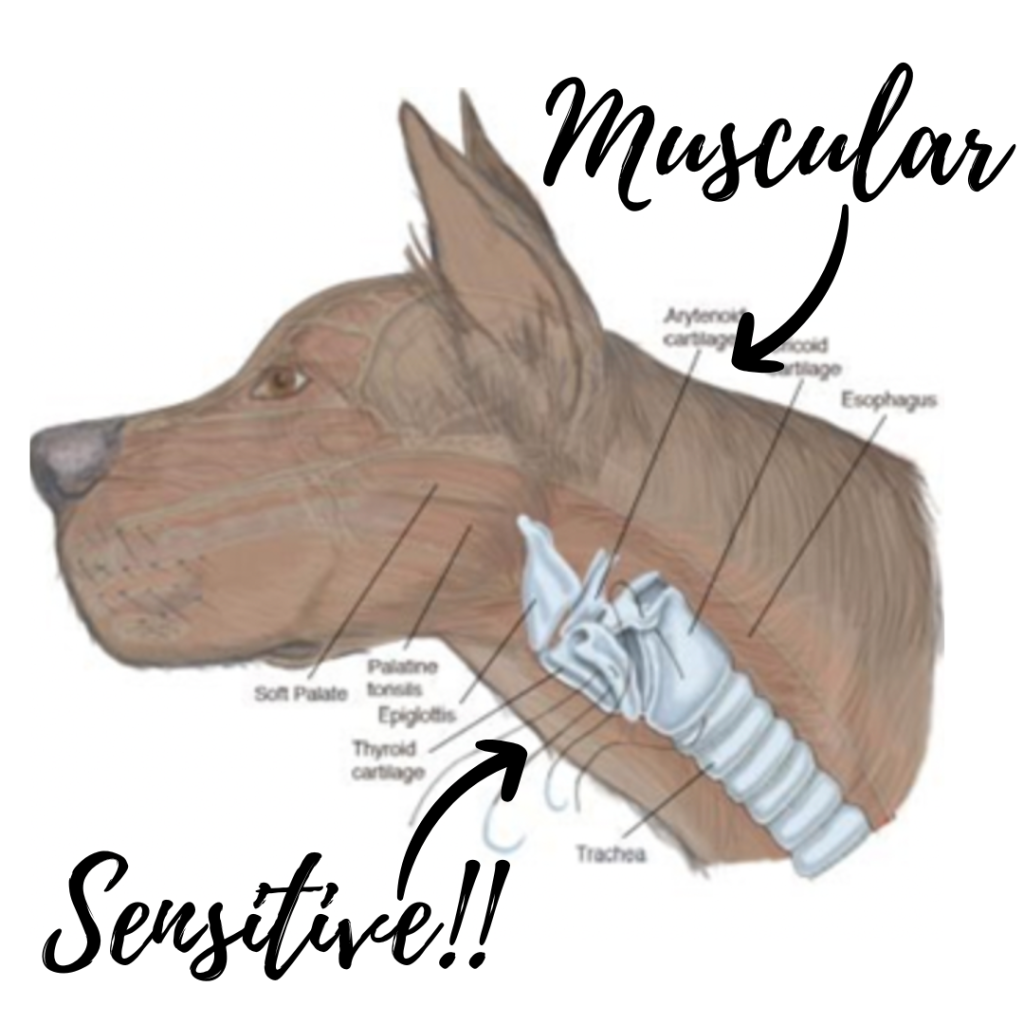
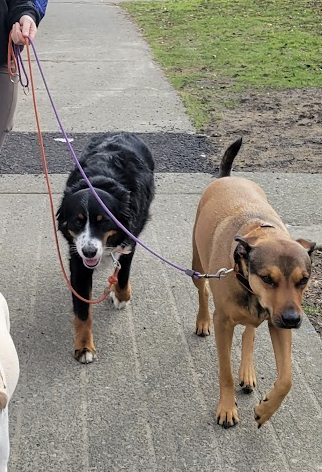
Plus, you can create slack, with a sharp tug, to get their attention, and remind them how it’s suppose to feel if they’re getting distracted.
You can’t do any of that with a flat collar, OR a harness. In fact, clipping a pulling breed, like a husky, at the back of the harness can even encourage them to pull! For pulling puppies that can’t wear a collar yet, try clipping them to the front of the harness to take away that evolutionary urge.
Adult dogs are not going to choke themselves out on a collar. They don’t need a harness to protect them from pulling, or prongs to punish them for it. They need mindful, consistent leadership.
Just say “no”… to physical punishment
Pet stores can sell a “training” collar – with punishing prongs or choking chains – without even teaching owners how to train with them.
Properly used (see Steps 1 & 2 above), these tools draw attention to the issues and correct unmanageable behaviour, just like stopping the walk with a Martingale collar does.
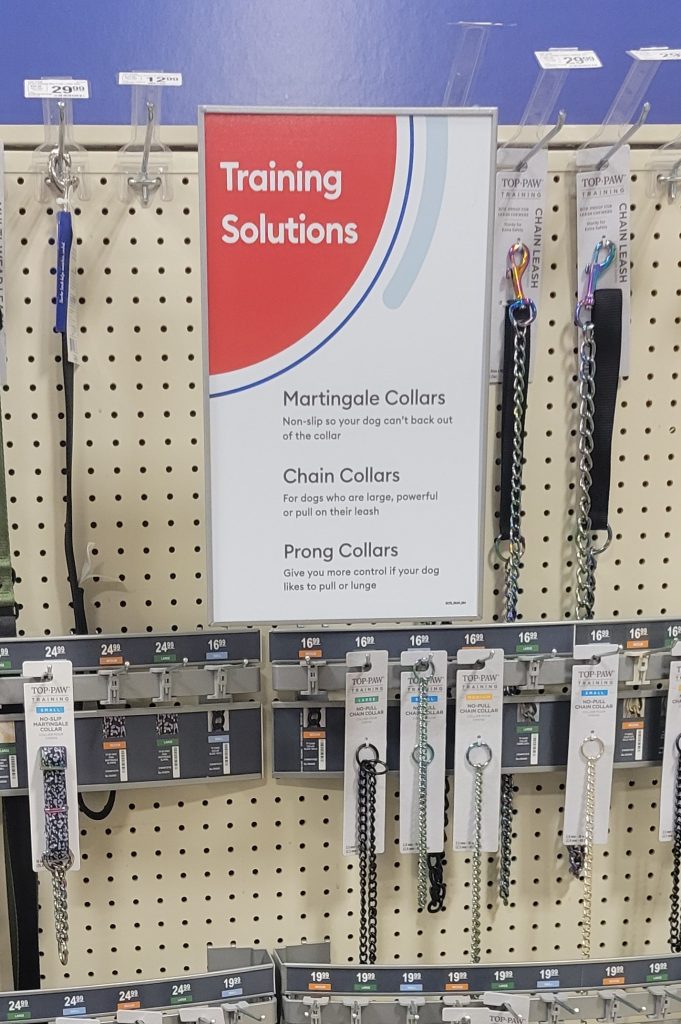
In Step 1, we set the expectation to respect each other, and keep our pack safe, but prong collars are heavy, and they remind the dogs constantly that they could get hurt…
Let Scamps help!
Step 3: Show, don’t tell
Scamps pack walks happen 3x/day, and we’ll make the time to meet and greet your dog, so they can find their groove. When they see all the dogs stopping and waiting because they’re pulling, the pieces fall into place. They see the connection, and they follow the rules.
You’ll see a difference after a few walks: happier, calmer dogs; more confidence, and better understanding – without painful punishment!
It all happens when dogs learn from dogs.
